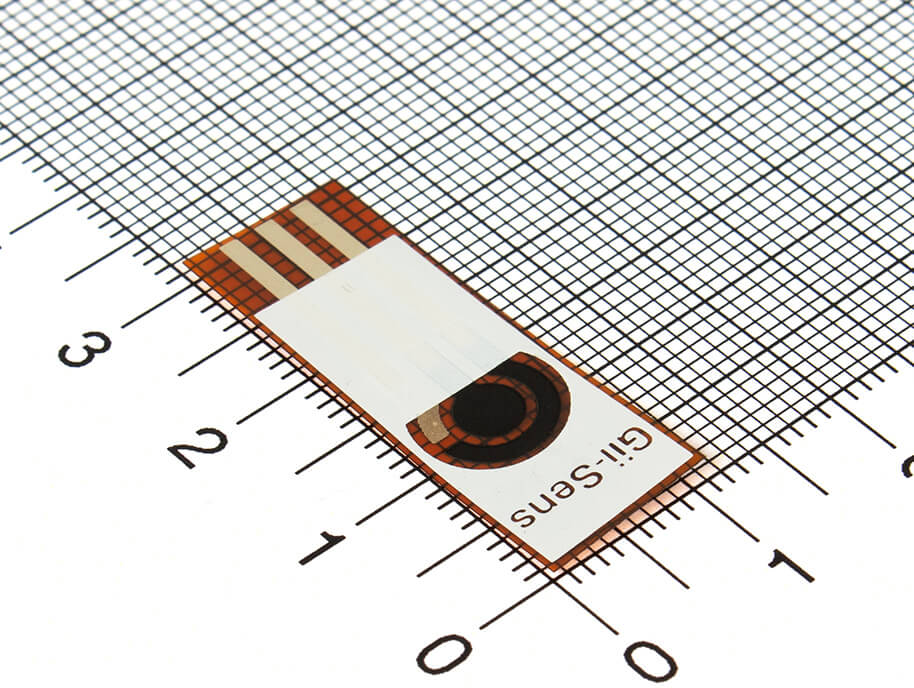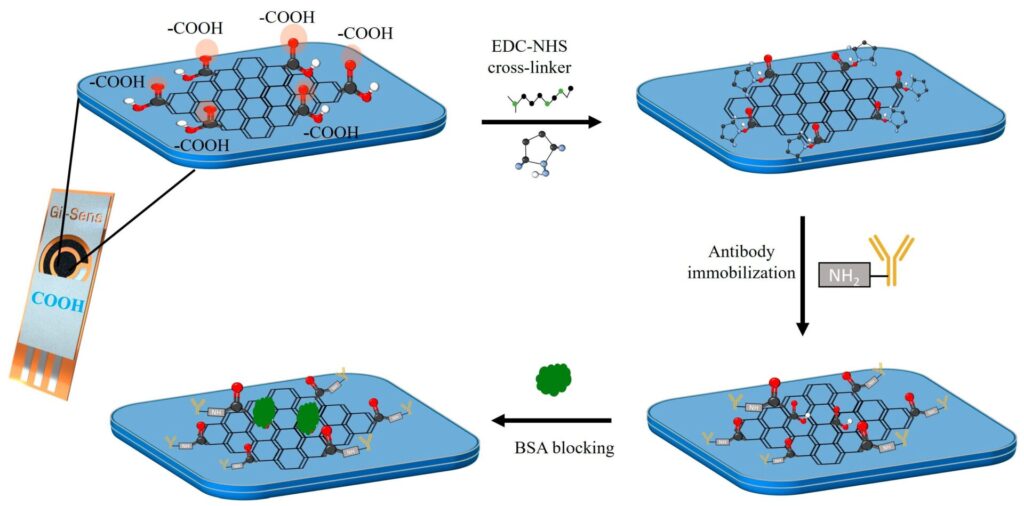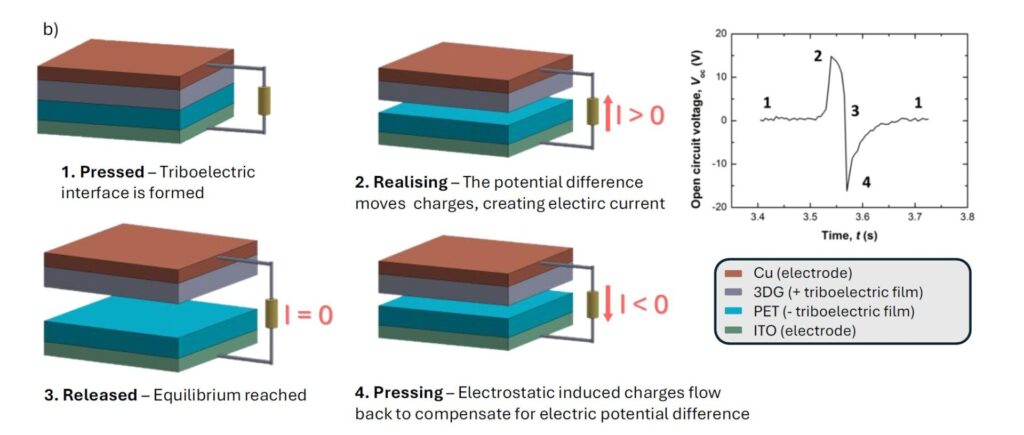
Non-covalent π–π functionalised Gii-Sens Carbon based electrode for interleukin-10 (IL-10) impedimetric detection
Highlights
- IL-10 acts as a gene regulator with functions encompass the suppression and termination of inflammatory immune responses.
- IL-10 is usually assayed using commercially available ELISA kits and its expression is evaluated through real-time PCR. All these techniques are reported as fast and straightforward; however, their sample preparation protocols are complex, not to mention the unique infrastructure and personnel requirements needed to perform them.
- You can maintain the benefits of our biosensors conductivity and flexibility without compromising on conductivity by employing π–π non-covalent functionalization with pyrene carboxylic acid (PCA) in a microfluidic chip.
- Adopting biosensors in clinical applications can shorten the response time of primary health services. However, the development of automated single-use biosensors is desired to offer widespread point-of-care monitoring and that’s where our Gii-Sens can be utilised. Finally, this approach reduced handling, and simple measuring achieved detection limits in the order of femtograms per millilitre.
Abstract
Monitoring Interleukin 10 (IL-10) is essential for understanding the vast responses of T-cells in cancer, autoimmunity, and internal homeostasis after physical stress. However, current diagnostic methods are complex and more focused on medical screening rather than point-of-care monitoring.
Biosensors based on graphene’s conductivity and flexibility are attractive to offer simple single-use and reduced handling. However, oxidation of its carbon lattice to develop functional moieties for biomolecule immobilization cuts down its electronic conductivity potential.
In this work, the authors present a microfluidic lab-on-chip device for simple impedimetric monitoring of IL-10 based on graphene foam (GF) flexible electrodes (Gii-Sens).
Graphene’s (Gii) structure was maintained by employing π-π non-covalent functionalization with pyrene carboxylic acid (PCA). Impedimetric measurements could be performed in low ionic strength phosphate-buffered saline (LI-PBS). The PCA-antibody modification showed to endure the incubation, measurement, and washing processes performed in the microfluidic device.
Electrode modification and measurements were characterized by, electrochemical impedance spectroscopy (EIS), contact angle, and scanning electron microscopy. From the contact angle results, we found that the wettability of the graphene surface increased gradually after each modification step. Detection measurements performed in the 3D-printed microfluidic device showed a linear response between 10 fg/mL to 100 fg/mL with a limit of detection (LOD) of 7.89 fg/mL in artificial saliva. With these features, the device was used to quantify IL-10 samples by the standard addition method for 10 fg and 50 fg with recoveries between 82% and 99%. Specificity was evaluated towards interleukin 6, TNF-⍺ and bovine serum albumin.
Introduction
The coupling of aromatic molecules on graphene is used to prevent its stacking and agglomeration to improve its electrochemical storage (Bello et al., 2014). The pyrenil group is highly aromatic and its derivatives have been employed to provide functional groups for labeling and capturing small molecules (Chen et al., 2001). Chemisorbed aromatic compounds have shown excellent electron transfer from covalently bonded enzymes to carbon-based nanomaterials (Göbel and Lisdat, 2008). Their strong interaction is promising for the development of robust and sensitive biosensing devices and if needed the graphitic surface can be regenerated under ethyl acetate reflux conditions (Lu et al., 2010).


